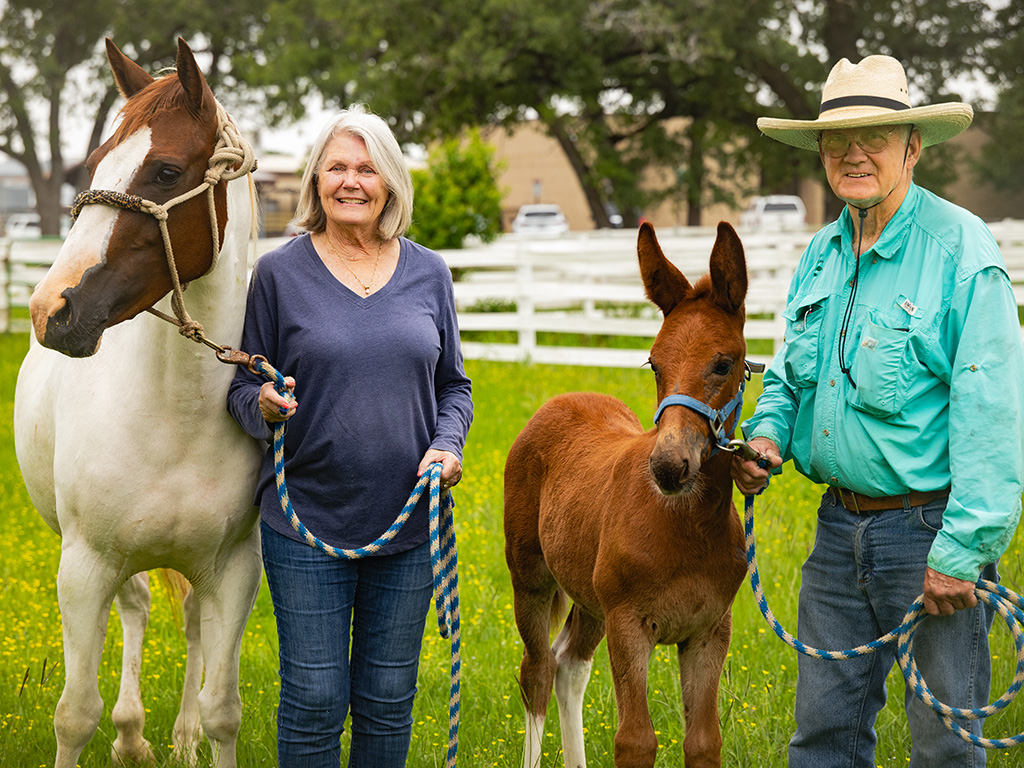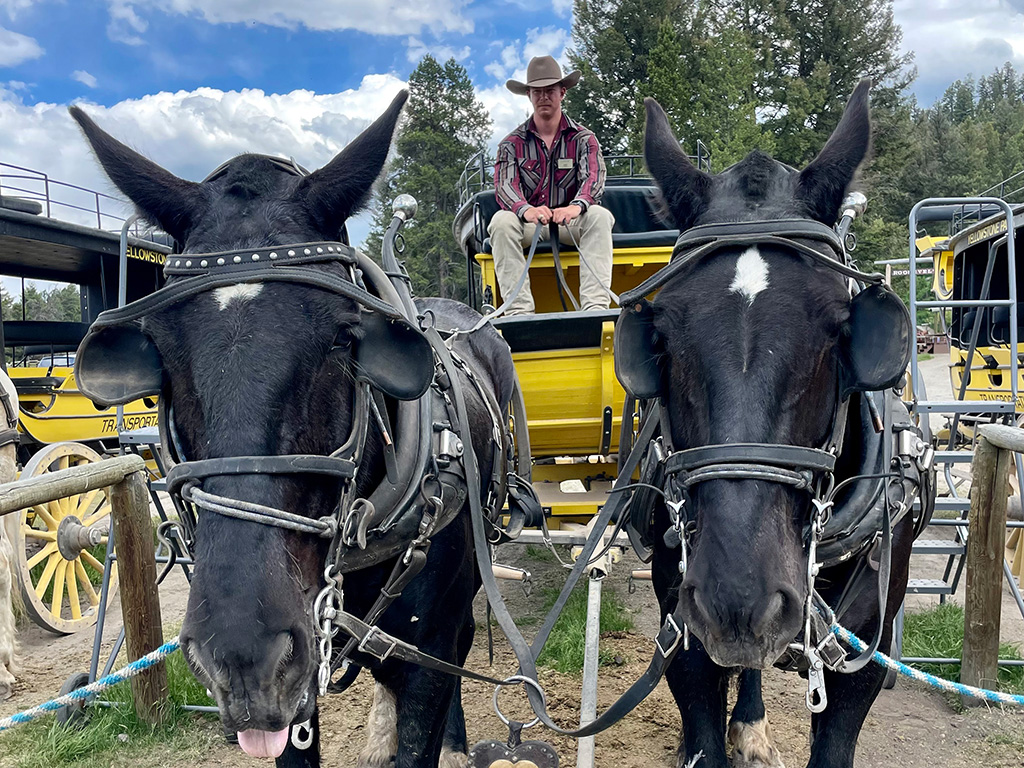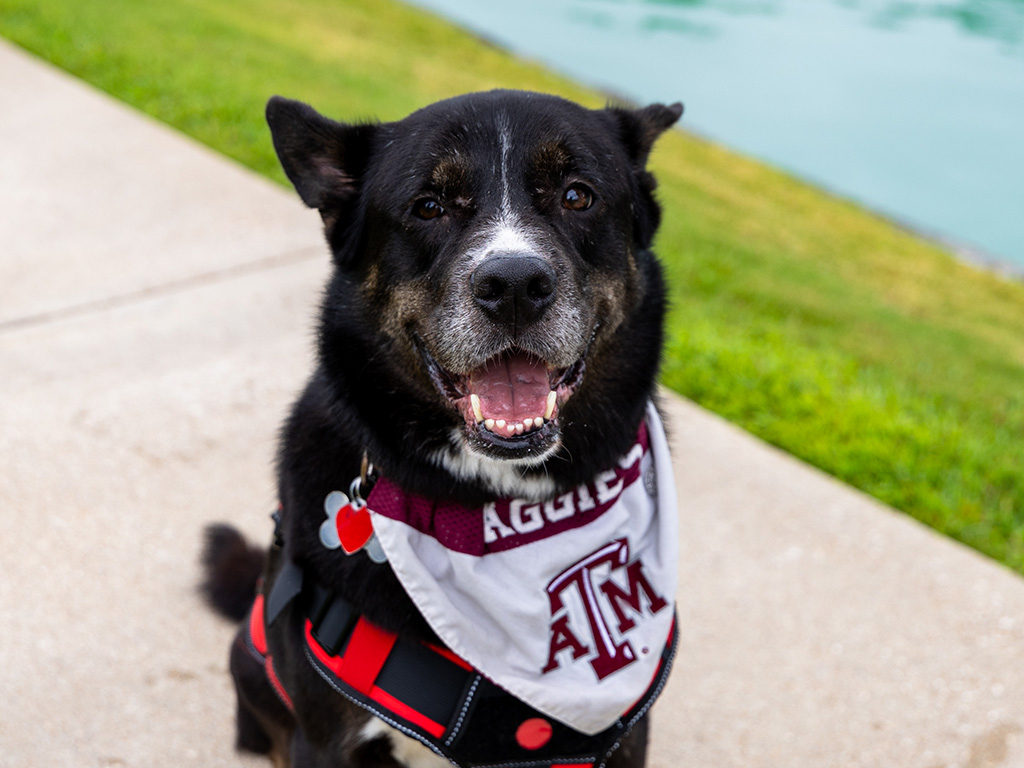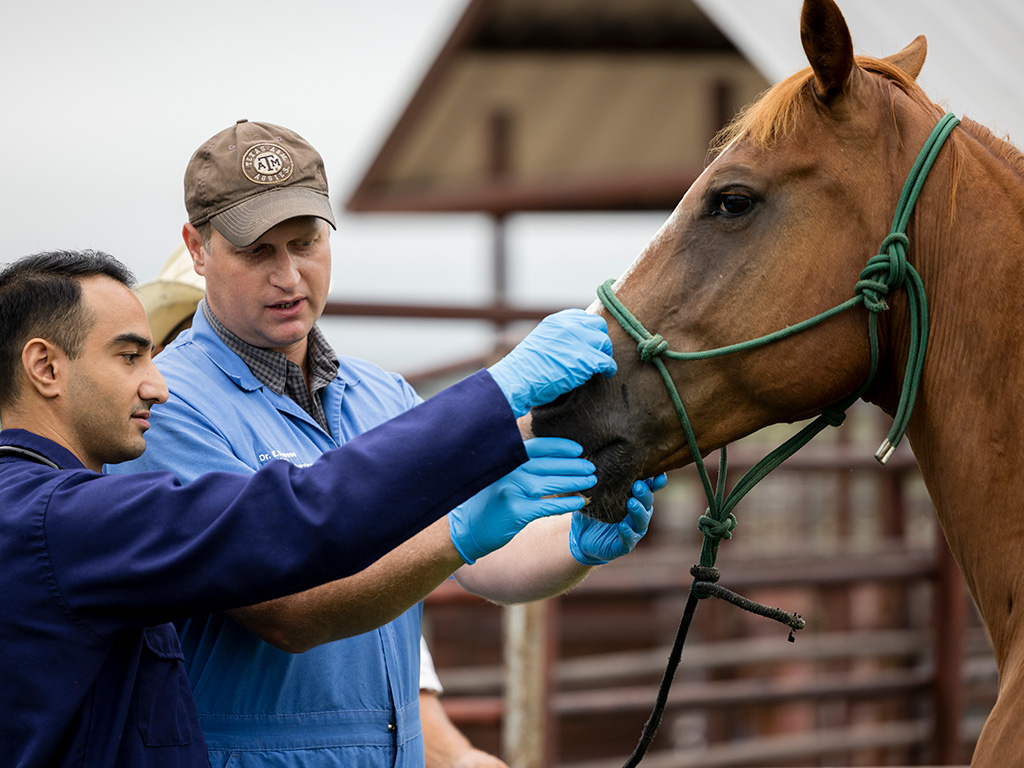Texas A&M Ranked Among Leading Veterinary Schools In The Nation

The Texas A&M College of Veterinary Medicine & Biomedical Sciences (VMBS) has tied as the No. 5 veterinary school in the United States, moving up five spots from 2023, according to the 2025 U.S. News & World Report education rankings.
The U.S. News & World Report rankings align with this year’s Quacquarelli Symonds (QS) World University Rankings by Subject, in which the VMBS is also ranked fifth in the country in veterinary science.
“I am continually impressed by all of the outstanding achievements made by the faculty, students, and staff at the Texas A&M College of Veterinary Medicine & Biomedical Sciences,” said Dr. John R. August, the Carl B. King Dean of Veterinary Medicine. “The U.S. News & World Report rankings reflect our ongoing pursuit of excellence in teaching, research, patient care, and service as well as our impact across the entire state.”
Showing Dedication In The Classroom And The Clinic
The VMBS’ Doctor of Veterinary Medicine (DVM) program prepares students for a wide variety of career paths within veterinary medicine. The program is one of the largest in the nation, with 180 students accepted each year, and has graduated 9,068 Aggie veterinarians.
For two consecutive years, Texas A&M DVM students achieved the highest pass rate in the nation on the North American Veterinary Licensing Examination (NAVLE), with 99% of the DVM Classes of 2023 and 2024 passing the test. NAVLE is taken by DVM students from all 33 colleges of veterinary medicine in the country in their final year of study.
After three years of learning in classroom and laboratory settings, DVM students complete a year of clinical rotations at the Veterinary Medical Teaching Hospital (VMTH), Texas A&M’s largest educational laboratory and the state’s only veterinary medical teaching hospital.
The VMTH treats more than 26,000 cases each year across its small and large animal hospitals, where patients have access to the full spectrum of veterinary care — from annual preventive medicine to specialized services.
Preparing Tomorrow’s Medical Leaders
VMBS students also have the opportunity to participate in research that supports advances in animal, human, and environmental health alongside faculty members who annually receive millions of dollars in extramural funding from the National Institutes of Health, National Science Foundation, U.S. Department of Agriculture, U.S. Department of Defense, private foundations, industry, and the State of Texas.
“Our college is ranked among the best because of our world-class faculty who excel as researchers, veterinary clinicians, teachers, and mentors,” said Dr. Ramesh Vemulapalli, VMBS executive associate dean. “Their outstanding accomplishments drive our academic reputation. The quality and impact of our faculty research and scholarship have placed the college in this preeminent position.”
The VMBS’ dedication to excellence also stretches to the Texas Panhandle, where the Veterinary Education, Research, & Outreach (VERO) program, located on the West Texas A&M University campus in Canyon, houses the VMBS’ 2+2 DVM program.
The 2+2 DVM program offers up to 18 students the opportunity to complete the first two years of their veterinary medical education at VERO before joining their peers in College Station for their third and clinical years. VERO researchers also address some of the most pressing issues in the food animal industry today, such as antimicrobial resistance and bovine respiratory disease.
In addition, the VMBS is one of the only veterinary colleges in the U.S. that houses an undergraduate biomedical sciences (BIMS) program. BIMS is the largest degree-granting undergraduate program at Texas A&M, and the major is also offered at the Higher Education Center in McAllen, where it is the largest undergraduate program.
With more than 2,200 currently enrolled students and 13,272 former students, the program emphasizes the interconnectedness of animal, human, and environmental health and brings together students with an interest in medical careers that impact all three.
The U.S. News & World Report rankings are based on expert opinions about program excellence and statistical indicators that measure the quality of a college’s faculty, research, and students. The 2025 Best Health School rankings reflect peer assessments of academic quality as well as considerations that include location, environment, strength of different fields, cost after tuition and financial aid, and job attainment.
###
For more information about the Texas A&M College of Veterinary Medicine & Biomedical Sciences, please visit our website at vetmed.tamu.edu or join us on Facebook, Instagram, and Twitter.
Contact Information: Jennifer Gauntt, Director of VMBS Communications, Texas A&M College of Veterinary Medicine & Biomedical Sciences, jgauntt@cvm.tamu.edu, 979-862-4216
You May Also Like








